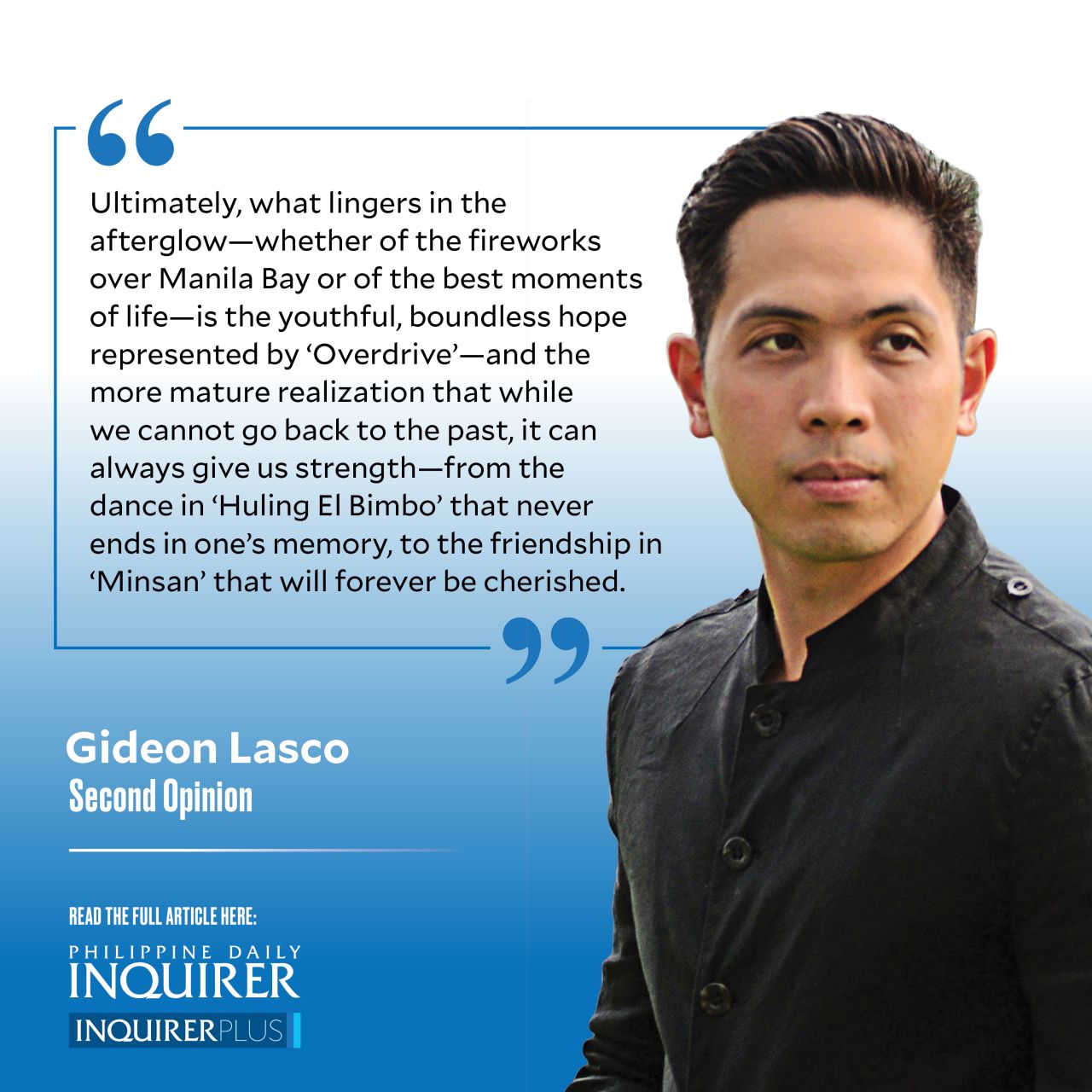Eraserheads and the meaning of life
Parañaque City—I came to this part of Metro Manila to watch the Eraserheads; to join an estimated crowd of 75,000 in celebrating the reunion of an iconic band. But as Raymund Marasigan began beating his drums; as Buddy Zabala and Marcus Adoro began strumming their guitars; and as Ely Buendia started singing familiar songs with his all-too-familiar voice, I was back in Los Baños as a kid in the late 1990s.
“Ang bahay namin, maliit lamang…” I could have described our apartment in Tindalo Road with those lyrics from “Toyang.” But it was a most happy childhood in the faculty housing of UP College of Forestry, where my father worked as a professor. With the neighborhood kids, I played patintero, tumbang preso, siato, and interminable rounds of taguan in Mt. Makiling’s forests. My younger brother and I would play computer games like Civilization II and Final Fantasy X; my Ate Christine and I would watch MTV on lazy summer vacation days at a time when they routinely aired the music video of “Ang Huling El Bimbo.”
Juvenile as I was, I thought that I was too young to understand the songs of Eraserheads, but I was convinced that like the fiction of Nick Joaquin that I read (but barely understood) around the same period in my life, they contained some hidden meaning—and some answers to the meaning of life.
Even so, like many of my classmates who trooped to the SMDC Festival Grounds, I came to associate those songs with my youth, such that when I studied in the Netherlands, they were a big part of my playlist. And in turn, they, too, became the musical background to my graduate school memories, alongside Ely Buendia’s words that always made me smile while jogging in Oosterpark: “Kung ako ang papipiliin / Ay nag-Amsterdam na ako.”
——————In the open-air, standing concert made much more pleasant by the cool Christmas breeze, attendees met the latest in entertainment technology, with “Alapaap”-worthy psychedelic lights, unexpected remixes, and a trippy “E” in the middle of the stage. The very site—part of an ever-expanding reclamation area in Manila Bay, did not exist around the time when the Eheads were studying in UP Diliman: a reminder of how much has changed from the 1990s to the present.
But amid such an extravaganza, it was the music that drew generations, from Katinko-bringing titos and titas, to TikTok-using Gen Zs; from casual music fans drawn by the spectacle of a historic reunion, to diehards sporting t-shirts of concerts past.
Such a broad appeal is understandable given the enduring beauty of a music that has profoundly influenced OPM till the present day—as well as how their lyrics speak to human experiences. “Ligaya,” for instance, is a timeless anthem of infatuation firmly located on campus—“Gagawin ko ang lahat pati ang thesis mo”—while “Pare Ko” gives voice to the equally undying trope of heartbreak, anticipating “friendzoned” the way, perhaps, that “Magasin” anticipates TOTGA. I appreciate that alongside the more famous soundtracks, Eheads also brought in their more activist side, which are perhaps even more relevant today as they were in the post-Edsa years, as in “Yoko”:
“Tigilan na ’tong raket raket ng gobyerno,
’Di ko na kelangan ng pang-aabuso n’yo,
Ginagawa kang puppet puppet ng army,
’Yoko na, ’yoko na, ’yoko na, ’yoko na,
’Yoko nang mag-CMT”
——————
Nothing lasts forever, not even a concert that involved Mel Villena’s AMP Orchestra, Gary V., and a holographic Francis M. Adding poignancy to the event—the band’s first since 2009, and I hope not the last—is our emergence from the pandemic, Eraserheads’ own fraught history, including band breakups and Ely Buendia’s heart attack, and our own personal journeys that led us to same place.
Even so, amid everything, we can still take comfort in songs that walk us through the highs and lows of our lives, and take us home as though we had never left the Toyangs of our lives. Sometimes, we have to grapple with spilled Spoliariums, and wonder, just like the protagonist in “Huwag Mo Nang Itanong,” whether life is like a field trip to a pencil factory: “Isang mahabang pila / Mabagal at walang katuturan”—a feeling perhaps exacerbated by having to live through the increasingly unbearable stresses of Metro Manila.
But ultimately, what lingers in the afterglow—whether of the fireworks over Manila Bay or of the best moments of life—is the youthful, boundless hope represented by “Overdrive”—and the more mature realization that while we cannot go back to the past, it can always give us strength—from the dance in “Huling El Bimbo” that never ends in one’s memory, to the friendship in “Minsan” that will forever be cherished.
Their songs may not have the answer to the meaning of life, but the Eraserheads have given me something close enough, no less valuable, and for which I will always be grateful for: Music.
——————
glasco@inquirer.com.ph





















